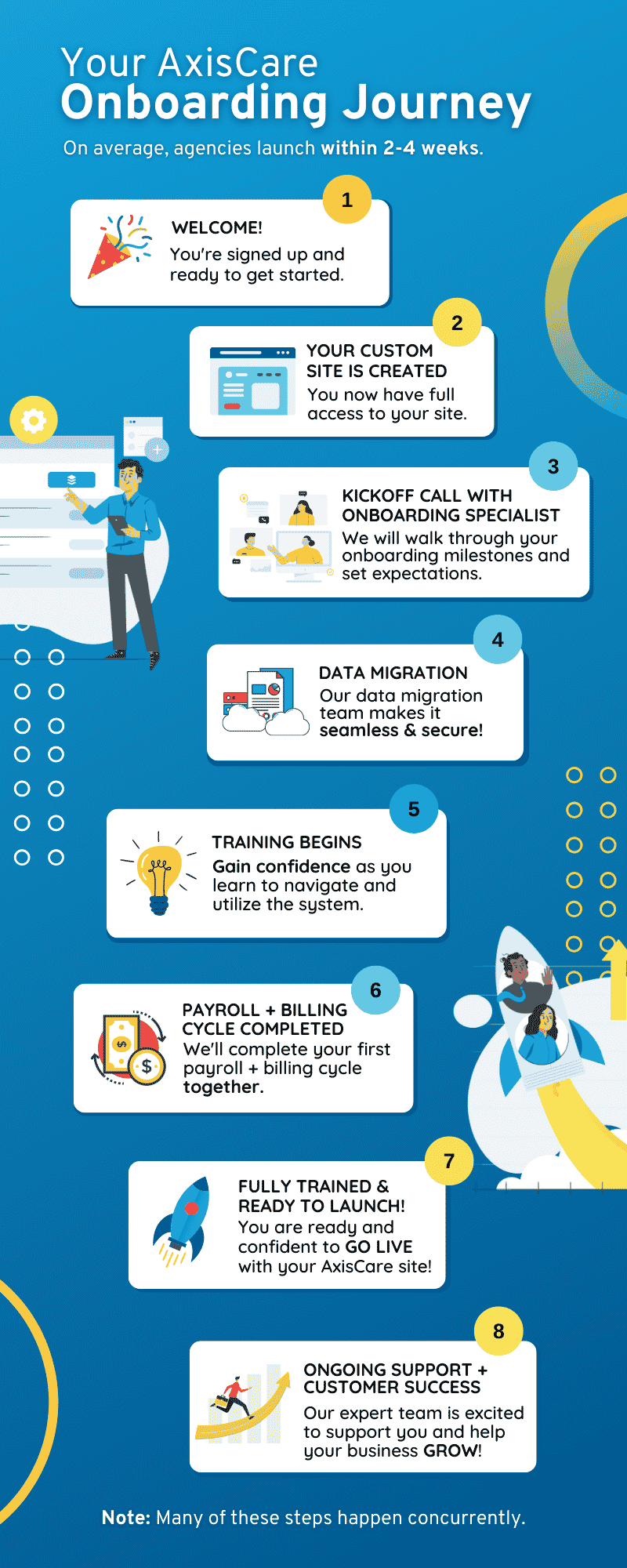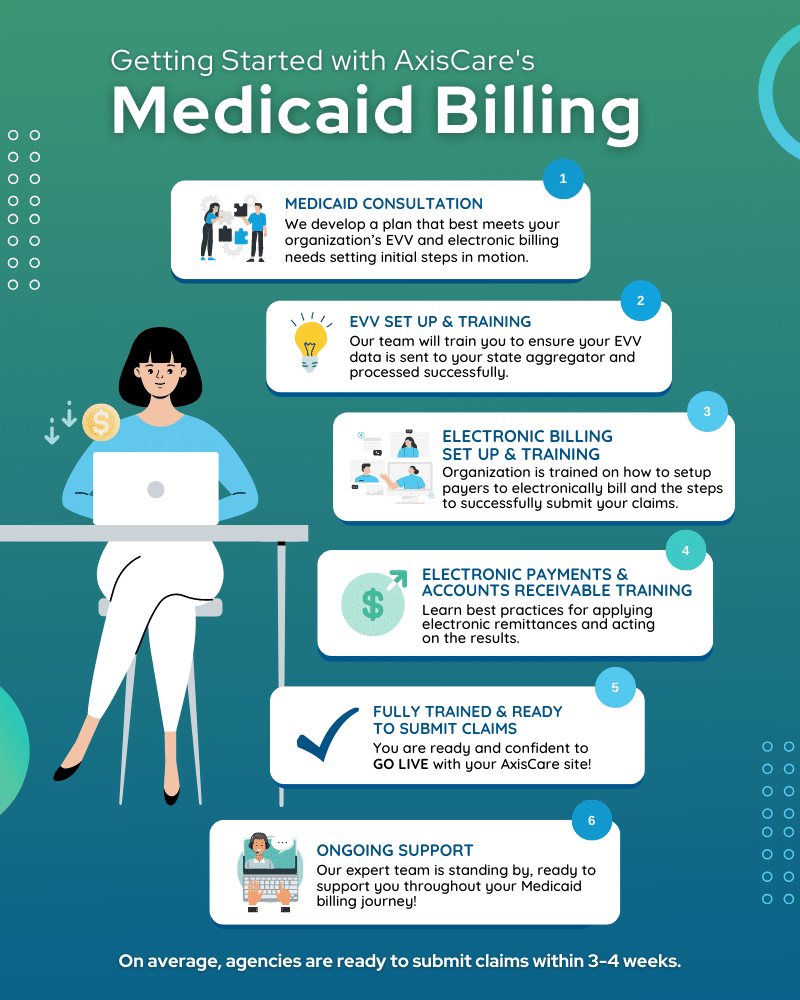The United States spends a larger slice of its GDP on healthcare than any other country in the OECD*. In 2021, that number hit 17.8%, which is nearly twice as much as the average – but it’s still not enough to provide the care Americans need and deserve.
Though they spend proportionally more than every one of their peers, the U.S. has a lower life expectancy at birth than the OECD average. Our rate of avoidable deaths is higher. We have very few hospital beds available for sick individuals. And American adults are more likely to have multiple chronic conditions than anywhere else in the OECD, representing an outsized need for clinical care.
All of this translates to an overburdened medical system that’s buckling under its own weight. While home care agencies represent a small (but growing) portion of the American healthcare landscape, they have an important role to play: reducing hospitalizations at the source.
Here’s how predictive analytics can help agencies reduce hospital readmissions by anticipating health events before they spiral out of control, helping hospitals free up more resources for Americans in need.
Understanding the Hospital Readmission Challenge
Hospital readmissions occur when a client must return to the hospital shortly after being discharged. They are often associated with complications that could have been prevented with the right at-home care, which can indicate gaps in care, poor discharge planning, or insufficient follow-ups.
For patients, readmission can be incredibly uncomfortable; it goes without saying that nobody enjoys spending time at the hospital. These situations are especially distressing to individuals chronic with conditions or limited support systems, who may spend even more time in a clinical setting with little outside help.
From a provider perspective, hospital readmissions have a direct impact on the cost and availability of healthcare. Each bed that is occupied by a readmitted patient is one that can’t be allocated to another person in need. And since readmissions are often considered preventable, providers can actually face penalties for letting them happen, such as those imposed by Medicare under the Hospital Readmissions Reduction Program (HRRP).
How Predictive Models Identify High-Risk Patients
Predictive analytics uses data that has been collected over time to identify trends and forecast outcomes. To do so, it feeds your database through algorithms and machine learning models, analyzing huge quantities of information faster and more accurately than a human ever could. Its output is a collection of actionable insights that can be used to identify clients at high risk for hospitalization, falls, or health events.
Predictive models pull data from a variety of sources, including electronic health records (EHRs), insurance claims data, clinical assessments, social determinants of health, and even real-time data from wearable devices. To paint as nuanced a picture as possible, this data covers everything from demographic and medication information to past diagnoses and lifestyle factors.
Their output can take on the form of a risk score based on these health-related factors. For example, if someone has been hospitalized many times, does not take their medication consistently, and has limited social support, the model would return a high score for this individual.
Implementing Targeted Interventions
One key benefit of a predictive analytics program is an improved ability to allocate and optimize resources. If agencies can forecast which of their clients is at a greater risk of readmission, they can adjust care protocols to accommodate greater need. For example, a high-scoring client might be scheduled for more frequent caregiver visits or set up with remote monitoring tools that can catch complications early on.
These predictive insights can also smooth out communication and coordination across care teams. By integrating risk scores and alerts into care planning tools or EHRs, teams can make informed decisions quickly and adjust care plans proactively to provide even more targeted support.
Integrating Analytics into Care Workflows
Every new platform and digital touchpoint makes care teams’ lives more complex – so it’s essential to weave predictive reporting tools into their existing systems. Embedding analytical findings into EHRs, for example, makes the everyday decision-making process more specific, proactive, and beneficial to the individual.
On the client side of things, predictive analytics can translate to personalized, timely interventions that help preserve their health while, of course, reducing the likelihood of hospital readmissions.
The Impact on Client Outcomes & Healthcare Costs
When it comes to the American healthcare system, we don’t have a single dollar to waste. Predictive analytics attack this issue from two angles: first, they prevent individuals from being readmitted to the hospital when it could have otherwise been avoided. It’s simple math: if fewer individuals are sent to the hospital, then the cost of caring for a hospital’s patient load will go down, and the remaining funds can be distributed more evenly to those who need it most.
Second, they help care teams allocate resources more effectively. By identifying which clients need the most support, they can focus their time and services where they’ll have the greatest impact. The result? A happier, healthier, and more trusting client roster.
Track Hospital Readmissions Effectively With AxisCare
AxisCare makes it easy to document your agency’s hospital readmission rates. Prove the effectiveness of your readmission reduction efforts with data-driven reports and create comprehensive health records that will help you hit your care goals. Curious to learn more? Request a free personalized demo with our team.
*The Organization for Economic Cooperation and Development (OECD) is an international governmental organization with 38 member countries. They are broadly viewed as the most developed and most powerful economies in the world, including the United States, Japan, France, Germany, Italy, Canada, and the United Kingdom.









